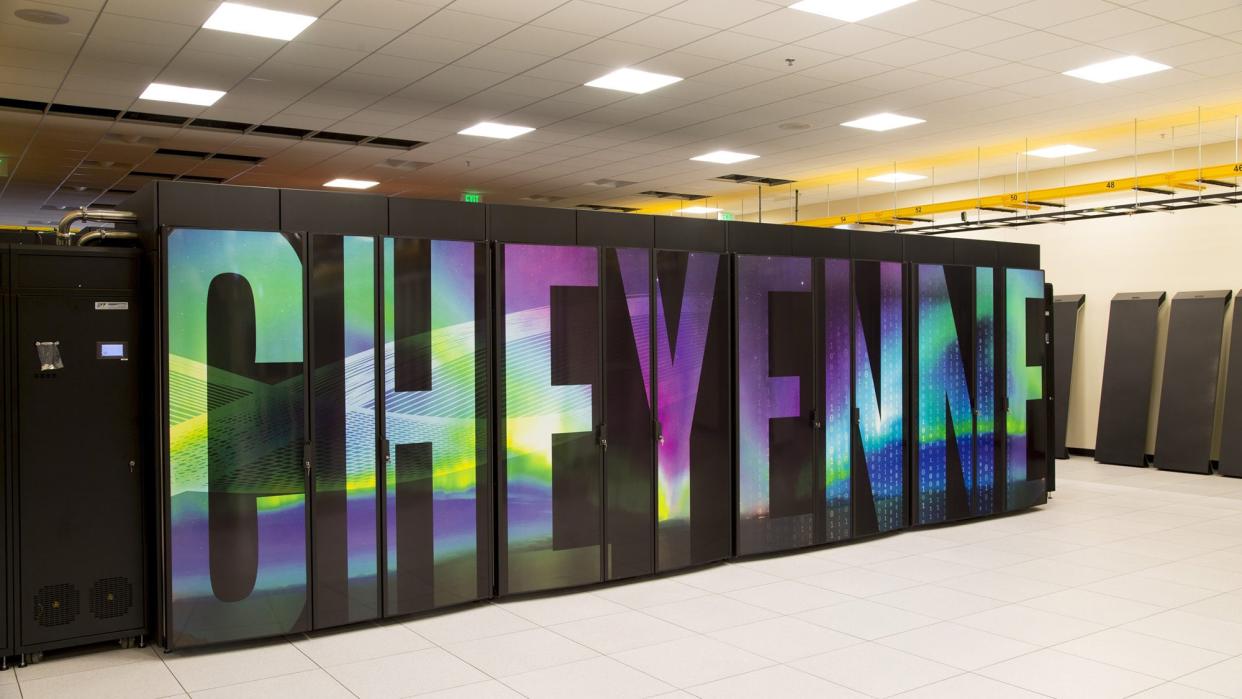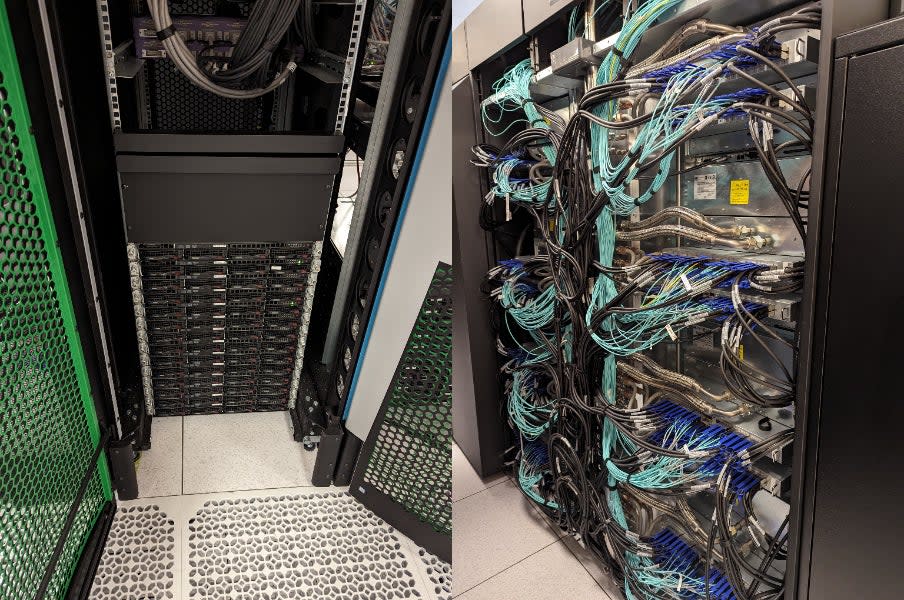For sale: government supercomputer, heavily used

If you've ever wanted to own your very own supercomputer, then rejoice: the US General Services Administration is auctioning off Cheyenne, a supercomputer belonging to the National Center for Atmospheric Research.
Cheyenne is located at the NCAR's Supercomputing Center in Cheyenne, Wyoming. It's been in operation since 2016, and the havoc that COVID wrought on global supply chains means that it's being retired two years later than anticipated. The extra work looks to have taken its toll: according to the auction listing, which was first spotted by Ars Technica, the machine's water cooling system has had issues with "faulty disconnects causing water spray." The idea of water spraying all over a multi-million dollar supercomputer is exactly as bad as it sounds, and the NCAR has decided that "the expense and downtime associated with rectifying this issue” has meant that “it's deemed more detrimental than the anticipated failure rate of compute nodes." It’s simply not worth it keeping it operational, so to the auction house it goes.
Supercomputers operate in a completely different realm to the consumer computers we use in everyday life. The most commonly used metric for making comparisons between supercomputers is the number of floating-point operations they can carry out per second, because these calculations are vital to scientific models, complex simulations, and various other high-end applications. “Floating-point operations” is abbreviated as FLOPS, and today's supercomputers operate in the range of petaFLOPS. At its peak performance, Cheyenne was good for 5.34 petaFLOPS, which would place it just outside the top 100 most powerful machines in the world today. It's unlikely to be able to reach that number these days, as the cooling issues mean that "1% of nodes [have] experienced failure ... which will remain unrepaired."

This might sound less than impressive, but even a water-damaged decade-old supercomputer is ridiculously powerful. How powerful? Well, consumer machines aren't really designed to do the sort of floating-point operations in which supercomputers specialize, so it's hard to do a direct comparison in terms of FLOPS. (For what it's worth, here's a guy on Twitter reporting that the same processor that's in the 2019 MacBook Pro on which I'm writing this piece can achieve a brief peak of 200 gigaFLOPS.)
However, it is possible to make comparisons between Cheyenne's hardware and that of an average PC, because while early supercomputers often used proprietary hardware, Cheyenne uses plain old server-grade CPUs—specifically, 18-core Intel Xeon E5-2697 v4s. As a rough comparison, each of these processors is about twice as powerful as the CPU in my laptop... and the Cheyenne features over eight thousand of them.
The system as a whole has a whopping 145,142 processor cores; my poor little laptop has six. The other hardware specifications are equally startling: the system has 313 TB of RAM, a 40 PB storage system, and slurps up 1.7 MW of power.
However, if you're reading this and thinking that Cheyenne sounds like exactly what you need to run Dwarf Fortress, you'll definitely want to read the fine print. For a start, Cheyenne is very, very heavy. It comprises 14 "E-Cells," each of which weighs 1,500 lbs (680 kg), along with two "Management Racks" which weigh in at 2,500 lbs (1,133 kg). As the GSA auction site notes cheerfully, "Moving this system necessitates the engagement of a professional moving company."
Still, the logistical challenges haven't entirely dampened interest in the machine. At the time of publication, 15 intrepid souls had placed bids, although the highest bid—$50,085.00—hasn't met the auction's reserve price. Bidding closes just after 6pm Central Time on May 3, so if you happen to be in possession of a crane, an oversized garage, a troublingly large bank balance and a hankering for absurd amounts of computing power... this may just be your moment.

